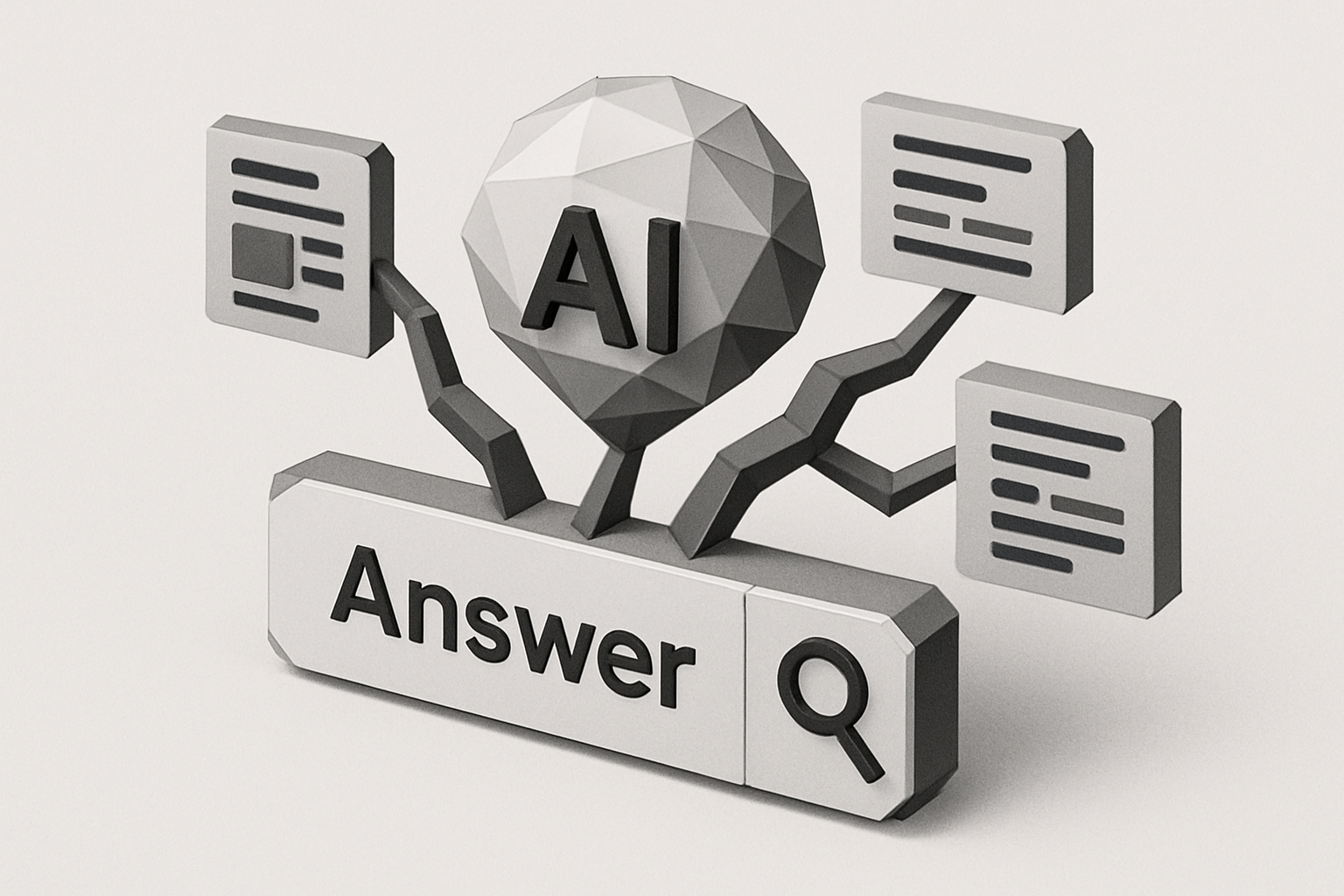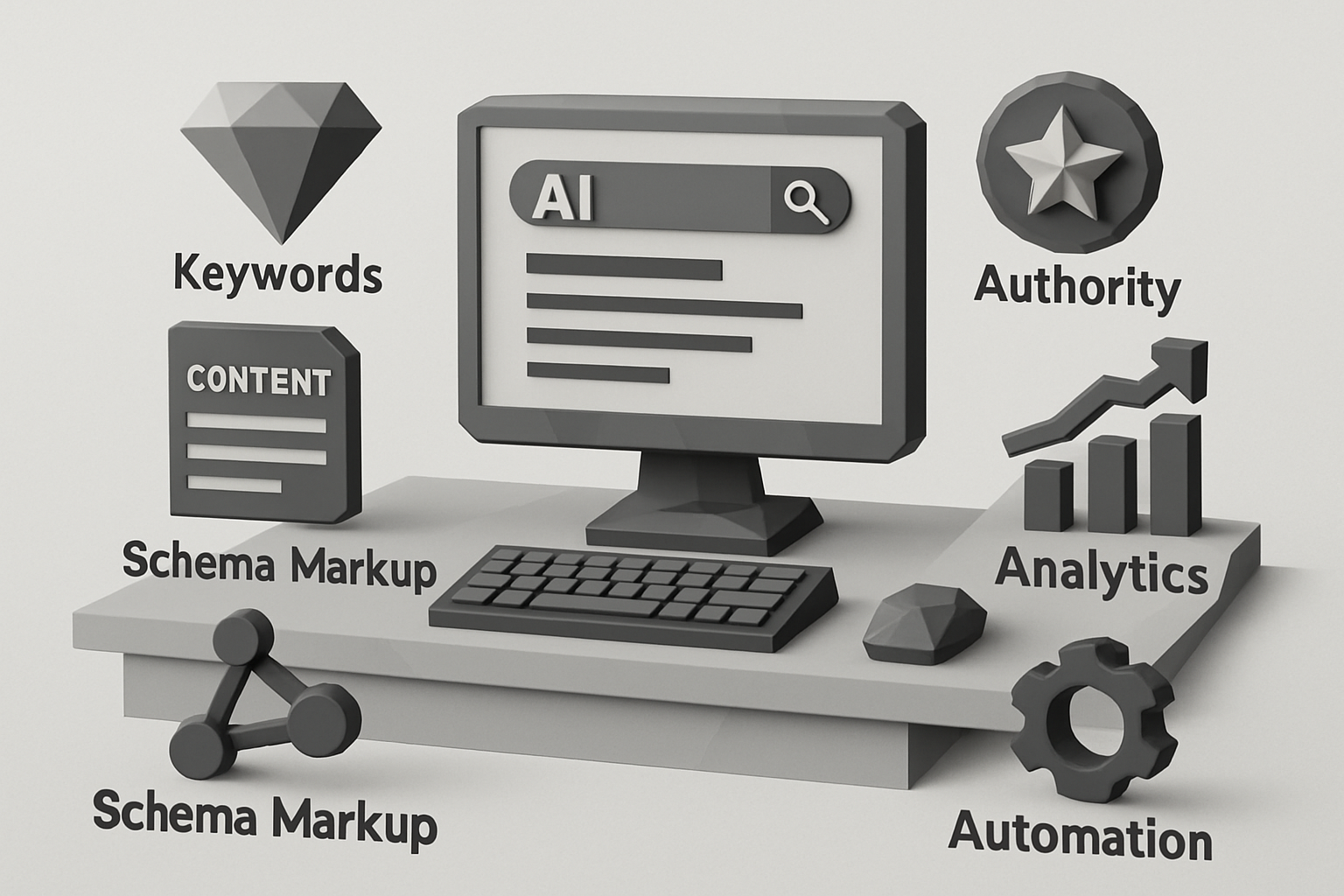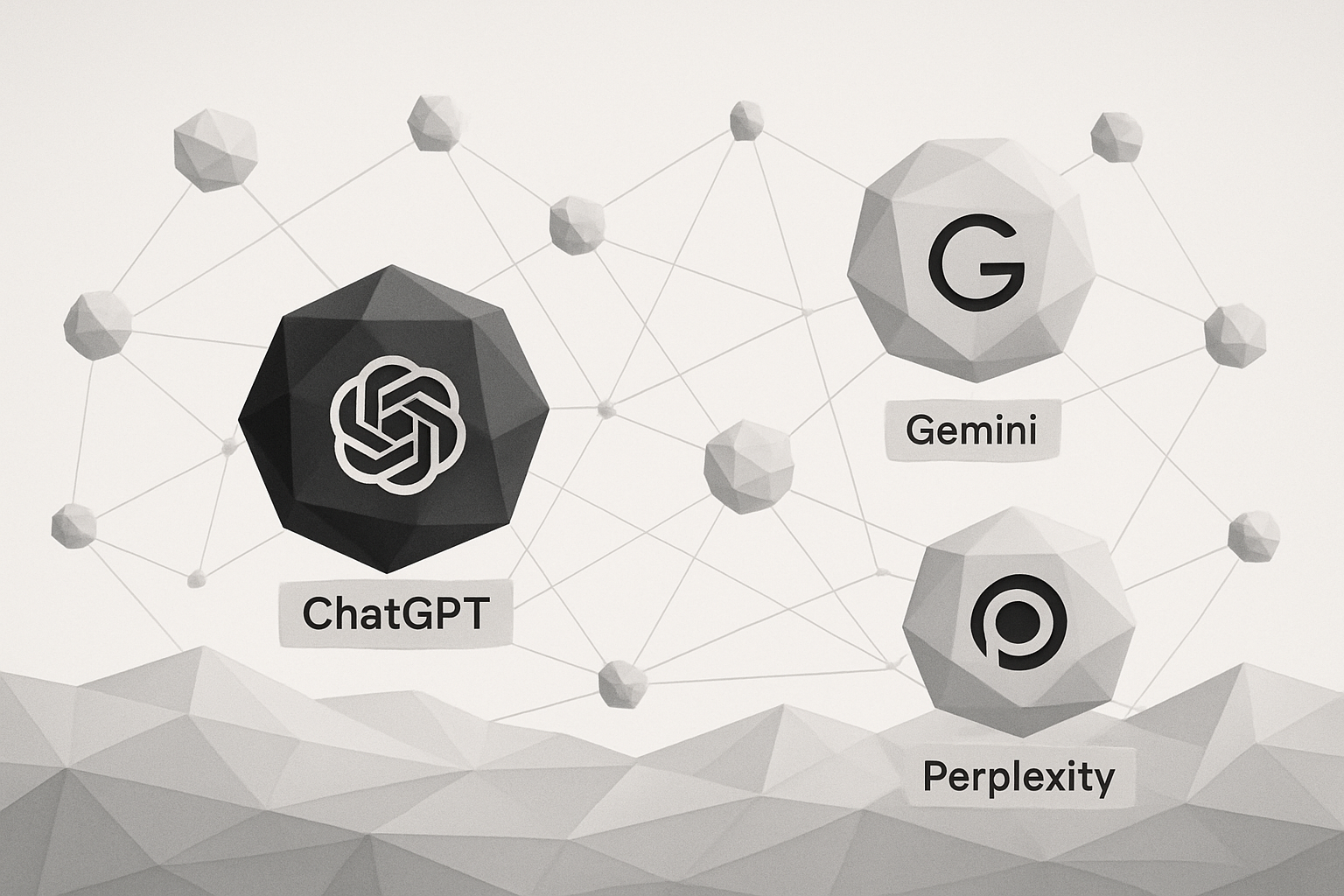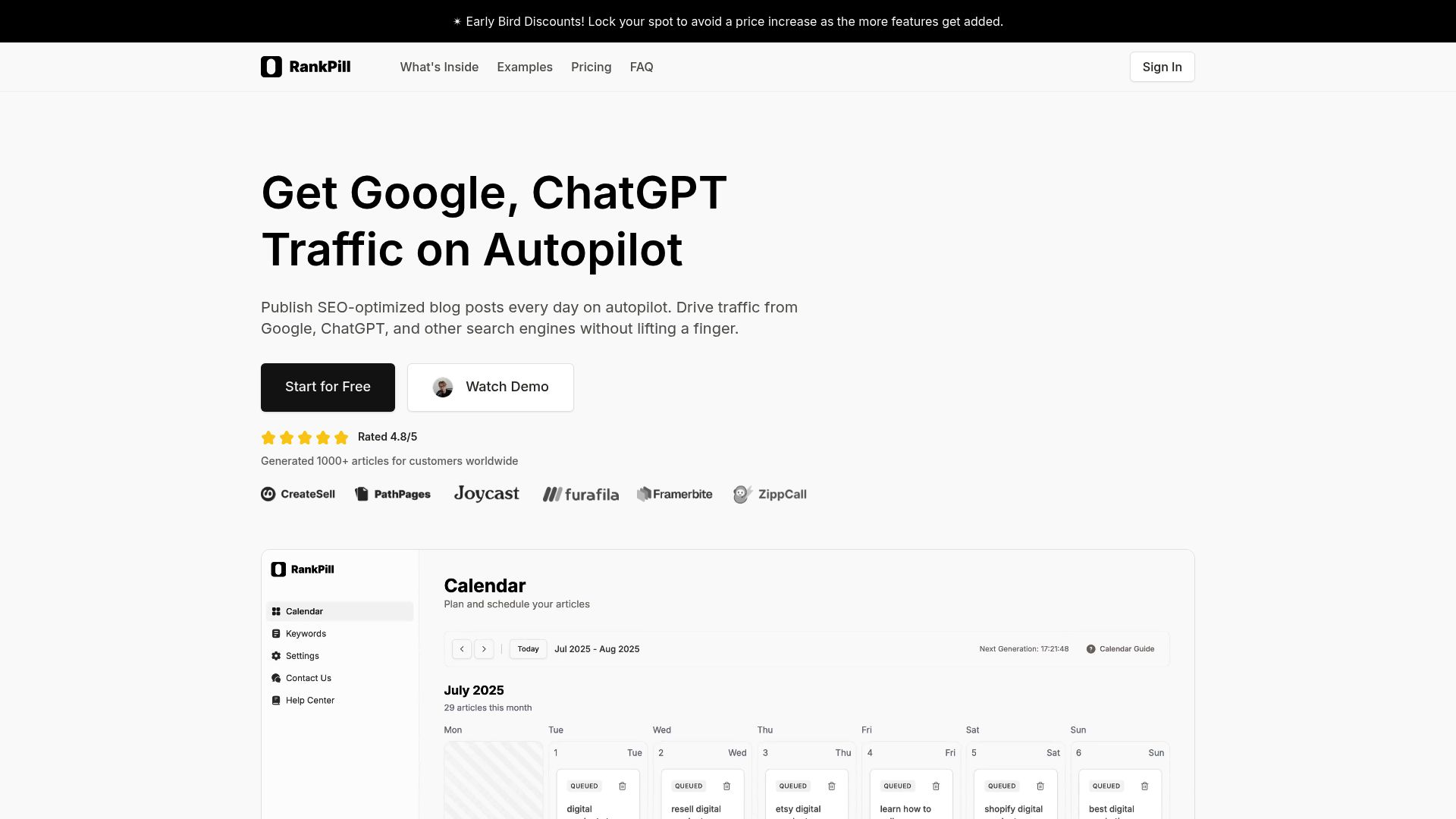Is your organic website traffic dropping as AI-driven search engines like ChatGPT and Gemini take center stage? The digital landscape is shifting fast, and brands that ignore this change risk being left behind.
Generative engine optimization is now essential for anyone seeking online visibility in 2025. With Gartner predicting a 25% decline in traditional search volume by 2026, adapting to AI-powered search isn't optional—it's urgent.
This guide will show you how to master generative engine optimization, stand out in AI-generated answers, and future-proof your business. Ready to stay ahead? Dive in and discover the strategies, tactics, and trends that will define success in the age of AI search.
Understanding Generative Engine Optimization (GEO)
Generative engine optimization is quickly becoming the new standard for digital visibility. As AI-powered search engines like ChatGPT, Gemini, and Perplexity deliver synthesized answers, brands must rethink how they create and structure content. GEO is about ensuring your expertise is visible—right where users are now searching.

What is Generative Engine Optimization?
Generative engine optimization is the process of tailoring your content specifically for AI-driven search engines. Unlike classic SEO, GEO focuses on getting your information included in AI-generated summaries and direct answers, not just traditional blue links.
This means optimizing for platforms that synthesize responses, such as ChatGPT and Perplexity, which now serve millions of users each month. GEO enables your brand to show up in context-rich, authoritative outputs, creating new pathways for targeted traffic and brand loyalty. For a deeper dive into the origins and methodology, the GEO: Generative Engine Optimization research paper provides a foundational overview.
GEO vs. SEO: Key Similarities and Differences
GEO and SEO share a common goal: to maximize your online visibility and authority. Both rely on keyword research, user experience, and technical optimization. However, generative engine optimization is designed for AI engines that synthesize and contextualize information, while SEO targets ranking on search engine results pages.
| Aspect | SEO (Classic Search) | GEO (AI Answer Engines) |
|---|---|---|
| Target | Search results (blue links) | AI-generated summaries |
| Optimization Focus | Keywords, meta tags | Context, natural language |
| Output | List of links | Synthesized answers |
Continuous adaptation is critical, as AI algorithms evolve rapidly.
Why GEO is Critical in 2025
AI-driven search is reshaping how people discover information. By 2025, generative engine optimization will be vital for brands wanting to stay visible as user behavior shifts. Gartner predicts that 79% of consumers will use AI-enhanced search within a year, and 70% already trust generative AI results.
With organic search traffic expected to drop by over 50% as AI-powered platforms grow, GEO ensures your content remains discoverable. Competition is heating up: Google, Bing AI, ChatGPT, and Perplexity are all vying for user attention. Adopting GEO now positions your brand at the forefront of this new paradigm.
How Generative AI/Answer Engines Work
Generative AI engines scan and synthesize content from multiple sources, using large language models to deliver clear, comprehensive answers. They select information based on relevance, quality, E-E-A-T signals, and structured data.
Content that is up-to-date, authoritative, and well-organized is more likely to be cited. For example, ChatGPT and Gemini highlight sources and provide detailed, synthesized responses. Proper formatting—using headings, lists, and summaries—helps AI models parse your content effectively, maximizing your generative engine optimization efforts.
Core Strategies for Generative Engine Optimization in 2025
Staying competitive in 2025 means evolving your approach to generative engine optimization. AI-driven search is rapidly changing how users discover, evaluate, and interact with online content. To capture attention and sustain growth, follow these core strategies designed for the modern AI-powered landscape.

Step 1: Conduct Holistic Keyword and Topic Research
Generative engine optimization begins with understanding what users—and AI engines—are truly searching for. Move beyond basic keywords and focus on topics, entities, and conversational queries.
- Map out semantic, question-based, and intent-driven phrases.
- Analyze how AI engines cite sources and structure their answers.
- Study competitors to find topics frequently featured in AI-generated responses.
- Use tools that track keyword opportunities and AI-driven traffic.
For example, grouping content into topical clusters helps signal relevance to AI models. This foundational research ensures your generative engine optimization efforts align with user needs and AI algorithms.
Step 2: Optimize Content for Context and Comprehensiveness
AI engines reward content that’s clear, comprehensive, and directly answers user questions. With generative engine optimization, your goal is to create resources that AI trusts to cite.
- Write in-depth guides that cover topics from multiple angles.
- Use bullet points, FAQs, and concise summaries for clarity.
- Address user intent with actionable, step-by-step answers.
- Implement structured data to help AI parse your content.
For deeper insights and examples on optimizing for AI-driven platforms, check out this practical guide on SEO for AI-powered search. Investing in context-rich content boosts your generative engine optimization outcomes.
Step 3: Enhance Content Authority and E-E-A-T Signals
Building trust is central to generative engine optimization. AI models favor sources that demonstrate expertise, experience, authoritativeness, and trustworthiness (E-E-A-T).
- Cite reputable sources and display author credentials.
- Regularly update your content for accuracy and relevance.
- Build backlinks and foster mentions from industry leaders.
- Partner with experts to reinforce subject mastery.
When your site becomes a recognized authority, AI engines are more likely to cite your content in their synthesized answers, amplifying the reach of your generative engine optimization strategy.
Step 4: Structure Content for AI Readability and Extraction
Generative engine optimization thrives when your content is easy for AI to scan and extract. Format your pages so information stands out and can be efficiently included in AI-generated summaries.
- Use clear headings, organized subheadings, and logical flow.
- Add schema markup for entities, FAQs, and reviews.
- Present data in tables, lists, or concise paragraphs.
- Summarize key points at the end of each section.
| Formatting Element | Benefit for GEO |
|---|---|
| Headings | Improves AI parsing |
| Tables | Enables direct extraction |
| Bullet Points | Enhances readability |
Effective structure is a cornerstone of generative engine optimization, increasing your odds of being surfaced by AI engines.
Step 5: Monitor AI Engine Performance and Adapt
Ongoing monitoring is vital for successful generative engine optimization. Track how AI platforms are referencing and sending traffic to your content.
- Use analytics tools to identify referral traffic from AI engines.
- Monitor which pages are cited or summarized in AI responses.
- Adapt content strategies based on observed trends and user behavior.
- Stay alert to updates from platforms like Bing AI or ChatGPT.
By closely tracking performance, you can refine your generative engine optimization tactics to match evolving algorithms and audience preferences.
Step 6: Integrate Traditional SEO with GEO
Don’t abandon classic SEO—blend it with generative engine optimization for holistic results. Technical health and user experience still matter.
- Maintain fast, mobile-friendly, crawlable sites.
- Optimize meta tags, internal links, and navigation.
- Use a unified content calendar for both SEO and GEO efforts.
- Structure pages to rank in Google and to be extracted by AI.
This integrated approach strengthens your generative engine optimization, ensuring visibility in both traditional and AI-powered search environments.
Step 7: Leverage AI-Powered Content Automation Tools
Scale your generative engine optimization efforts with automation. AI tools can streamline research, creation, and optimization—keeping your content fresh and relevant.
- Use AI platforms for keyword discovery, content writing, and enrichment.
- Automate the addition of images, videos, and links.
- Schedule regular updates to match AI engine trends and data.
- Monitor publishing consistency and adapt quickly.
Smart automation enables you to maintain momentum and adapt your generative engine optimization strategy as the digital landscape evolves.
Advanced GEO Tactics for AI-Driven Platforms
Staying ahead in generative engine optimization requires more than the basics. As AI-driven platforms like ChatGPT, Gemini, and Perplexity rapidly evolve, brands must adopt specialized tactics to secure visibility. Let’s break down advanced methods that will set your strategy apart in 2025.

Optimize for Multiple Generative Engines
Generative engine optimization means tailoring your content for diverse AI platforms, each with unique logic and preferences. ChatGPT might prioritize comprehensive explanations, while Perplexity leans toward concise, authoritative sources. Gemini, on the other hand, often integrates Google’s Knowledge Graph for entity-rich responses.
To succeed, analyze citation and answer patterns in each engine. Adjust your content’s structure and formatting to align with their tendencies. For instance:
- Use concise lists for Perplexity AI.
- Integrate entity data for Gemini.
- Provide context-rich intros for ChatGPT.
Staying flexible ensures your content is surfaced across the generative engine spectrum, maximizing reach.
Master Contextual Linking and Entity Optimization
Effective generative engine optimization relies heavily on how well your content connects topics and highlights key entities. AI engines identify relationships between people, places, and concepts to synthesize answers.
Use internal links to reinforce topical clusters and external links to authoritative sources. Implement entity-based schema markup to help engines understand your content’s context. For a deeper dive into how AI and SEO strategies are converging, check out AI and SEO convergence.
Highlighting entities relevant to your niche not only boosts visibility but also increases your chances of being cited in AI-generated answers.
Focus on User Intent and Conversational Queries
AI answer engines excel at interpreting natural language and user intent. Generative engine optimization should prioritize covering all query types—informational, navigational, and transactional—by using conversational phrasing.
Structure content to address common questions like “how,” “best,” or “why.” Incorporate long-tail, conversational keywords to match the way users speak to AI engines.
Example queries to target:
- “How does generative engine optimization work?”
- “Best tactics for AI search visibility”
- “Why is GEO important in 2025?”
This approach ensures your content aligns with evolving search behaviors.
Build and Showcase Topical Authority
Establishing topical authority is foundational to generative engine optimization. AI platforms reward domains with comprehensive, interlinked content clusters that demonstrate expertise.
Create a network of articles around your core topics. Use internal linking to guide AI engines through your knowledge base. Here’s a quick comparison:
| Strategy | SEO Impact | GEO Impact |
|---|---|---|
| Standalone articles | Moderate | Low |
| Interlinked content clusters | High | Very High |
Brands dominating AI-generated answers often have deep topical coverage and clear site structure.
Develop Real-Time and Evergreen Content
Generative engine optimization is not a “set and forget” process. AI platforms value both evergreen guides and up-to-date insights. Regularly refresh your content to ensure accuracy and relevance.
Balance long-lasting resources with timely updates on trends or industry news. For example, update your GEO strategy guides as AI engines roll out new features or algorithm changes.
Staying current signals to AI platforms that your site is a reliable, authoritative source for users.
Utilize Data, Visuals, and Multimedia
AI-driven platforms increasingly pull in rich media for their answers. For effective generative engine optimization, enhance your content with tables, images, infographics, and videos.
- Add clear alt text and captions for AI parsing.
- Use simple data visualizations to summarize key points.
- Structure media elements for quick extraction by AI engines.
For instance, Google AI Overviews and Bing AI often display visuals alongside text answers, making multimedia integration a must.
Monitor and Respond to AI Algorithm Shifts
Generative engine optimization is a moving target. AI platforms frequently update their algorithms and answer generation techniques. Stay proactive by tracking changes and testing how your content performs.
Monitor which pages are cited, what formats are favored, and adapt accordingly. When new features like “perspectives” panels or source attributions appear, adjust your strategy to maintain visibility.
Continuous monitoring and agile response are your best defenses against sudden drops in AI-driven traffic.
GEO Analytics, Measurement, and Performance Optimization
To thrive in the new era of generative engine optimization, brands must master analytics, measurement, and ongoing performance tuning. Success depends on understanding how AI platforms surface your content, tracking new metrics, and adapting quickly as search engines evolve. By building a robust analytics framework, you can ensure your generative engine optimization efforts deliver measurable, lasting results.
Tracking AI-Driven Traffic and Citations
The first step in generative engine optimization analytics is identifying where your AI-driven traffic comes from. With platforms like ChatGPT, Gemini, and Perplexity, traditional referral data may not capture every visit or mention.
- Use specialized analytics tools to monitor traffic spikes from AI platforms.
- Track when your content is cited or summarized in AI-generated answers.
- Analyze which pages or topics gain visibility within AI engines.
By keeping a close eye on these signals, you can prioritize content that resonates with generative engines and refine your generative engine optimization strategy for maximum impact.
Measuring Content Success in Generative Engines
Classic SEO metrics like clicks and rankings are no longer enough. Generative engine optimization requires new KPIs tailored to AI-driven platforms:
- AI citations: How often is your content referenced in AI-generated answers?
- Answer inclusion rate: What percentage of your pages appear in AI summaries?
- AI-sourced conversions: Do visitors from AI engines complete key actions?
| Metric | Traditional SEO | Generative Engine Optimization |
|---|---|---|
| Impressions | SERP Views | AI Answer Views |
| Rankings | SERP Position | Answer Inclusion Rate |
| Citations | Backlinks | AI Citations |
Tracking these metrics helps you measure the true reach and business value of your generative engine optimization efforts.
Iterative Optimization Using AI Insights
Generative engine optimization is not a one-and-done process. Continuous improvement is essential as AI algorithms and user behavior shift.
- Regularly analyze AI-generated answers for gaps or inaccuracies.
- Update and expand your content in response to missed opportunities.
- Monitor which pieces are frequently surfaced or overlooked by AI engines.
Use feedback loops to refine your content. For example, if a competitor’s article is cited more often, examine why and adjust your own approach. This agile mindset will keep your generative engine optimization strategy effective over time.
Tools and Platforms for GEO Analytics
Staying ahead in generative engine optimization means leveraging the right tools. Emerging platforms now offer features like citation tracking, entity analysis, and AI traffic segmentation.
- Look for analytics solutions that identify which AI engines drive traffic to your site.
- Use tools with real-time dashboards to monitor performance across traditional and AI channels.
- Some website builders, like Wix introduces AI Visibility Overview tool, now provide built-in support for GEO analytics.
Investing in these platforms ensures your generative engine optimization progress is measurable and actionable. As AI search grows, this data-driven approach will set your brand apart.
Future Trends and Predictions for GEO
The rapid evolution of generative engine optimization is setting the stage for a dynamic shift in how brands approach online visibility. As AI-driven search technologies mature, staying ahead requires both anticipation and adaptability. Let’s explore the trends shaping the future of generative engine optimization and what you should prepare for.
The Evolution of AI Search Engines
Generative engine optimization will be deeply influenced by the next wave of AI search engines. By 2025, these platforms are expected to offer hyper-personalized answers, integrate voice and multimodal search, and serve users across devices. The mainstream adoption of AI-driven search will touch every demographic, making it the new norm for information discovery.
Major players like ChatGPT, Gemini, and Perplexity are pushing boundaries with real-time data, context-rich synthesis, and source attribution. For a deeper look at these advancements, check out the Future of SEO and AI. Brands must prepare content that’s not only accurate but also easily parsed and cited by these sophisticated engines.
Impact on Organic Search and Digital Marketing
The rise of generative engine optimization is causing a seismic shift in digital marketing priorities. As AI engines deliver direct, synthesized answers, traditional organic search traffic is declining. According to Gartner predicts 25% drop in search volume by 2026, brands must expect further erosion of classic search engine referrals.
This trend is pushing marketers to reallocate budgets from legacy SEO tactics to generative engine optimization strategies. Companies are investing in AI-focused content, smarter analytics, and real-time adaptability to capture attention where users now search and interact most.
Preparing for Algorithmic and Regulatory Changes
As generative engine optimization matures, regulatory scrutiny is increasing. AI search engines will face mounting demands for transparency, privacy protection, and clear source attribution. Organizations like Google and OpenAI are regularly updating guidelines to address misinformation, bias, and data privacy concerns.
Brands should anticipate more rigorous standards for content accuracy and disclosure. Staying compliant means keeping a close eye on policy changes, updating content accordingly, and ensuring that structured data and citations are always up to date. Proactively adapting to these regulatory shifts will be crucial for long-term success in generative engine optimization.
Building Long-Term Resilience and Adaptability
Future-proofing your generative engine optimization strategy requires more than technical tweaks. It demands a culture of agility and learning. Leading brands are building resilience by:
- Continuously monitoring AI search updates and user trends
- Testing new content formats and structures
- Investing in ongoing team training and upskilling
Innovation will separate the winners from the rest. Those who embrace change, experiment with new generative engine optimization tactics, and adapt quickly will thrive as the search ecosystem evolves. Staying nimble ensures your brand remains visible, trusted, and relevant in the AI-driven future.
How AI Platforms Like RankPill Accelerate GEO Success
The rapid evolution of generative engine optimization is making it harder than ever for businesses to keep up. With AI-driven platforms constantly changing the rules, manual processes just can’t deliver the speed, scale, or adaptability required to maintain visibility.

That’s where AI-powered platforms like RankPill step in, offering businesses a streamlined path to generative engine optimization success. RankPill automates every critical step, from keyword research and competitor analysis to long-form content creation and optimization. This hands-off approach frees your team to focus on strategy while RankPill handles the technical details.
Key features that accelerate your generative engine optimization:
- Personalized keyword discovery: Aligns your content with both classic SEO and the latest AI-driven search trends.
- Automated content enrichment: Easily add images, videos, and relevant links to boost your chances of being cited by AI engines. For actionable tips, see AI content creation strategies.
- Seamless integrations: Connect directly with WordPress, Shopify, and other platforms for daily publishing and content freshness.
- Multi-language support: Expand your reach as AI engines serve increasingly global audiences.
- Real-time analytics: Instantly track performance metrics for both traditional SEO and AI-driven traffic.
RankPill’s all-in-one platform is ideal for SMBs and agencies that need a cost-effective way to scale generative engine optimization—without sacrificing quality or agility. As AI search technology evolves, RankPill ensures your content adapts and stays visible, allowing you to focus on growth while GEO complexities are handled behind the scenes.
So, if you’re feeling the pressure of keeping up with AI-driven search and all the new strategies we’ve covered, you’re not alone. Adapting to Generative Engine Optimization can feel overwhelming, especially as platforms like ChatGPT and Gemini reshape how people discover content. But you don’t have to do it manually or guess your way through. With RankPill, you can automate your GEO efforts—everything from competitor keyword analysis to content creation and optimization—so you stay visible and ahead of the curve. Ready to future-proof your traffic and make GEO work for you? Get Started